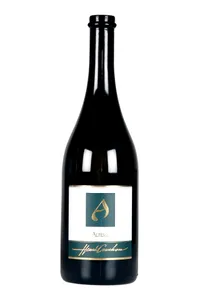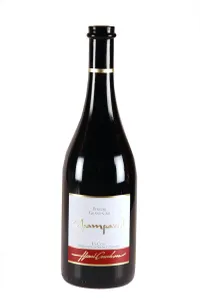Free delivery from Fr. 300 of purchase or 18 bottles, otherwise Fr. 15

Vaud
The second largest Swiss vineyard with 3,775 ha, Vaud comprises six wine regions: the Côte, Lavaux and Chablais following the arc of Lake Geneva from west to east and, further north, near Lake Neuchâtel, the Côtes de l'Orbe, Bonvillars and Vully. Classified as a UNESCO World Heritage Site in 2007, Lavaux, in addition to its terraced landscape between sky and lake, boasts two great wines: Dézaley and Calamin. In addition, a little over twenty lieux-dits, châteaux and clos have been classified as Premiers Crus to date. Such as Brez, Ovaille or Clos de la George.
The Vaud vineyard still lives under the hegemony of the Chasselas, which currently occupies a little more than 60% of the wine-growing area and whose origin is precisely in the Lake Geneva area. Its implantation in Dézaley by the Cistercian monks dates back to the 12th century and the relationship that this grape variety has with the slopes of Vaud can only be passionate and fascinating. As for the white "specialities", they only occupy a little more than 4% of the vineyard. The rest of the production is oriented towards red wines with a predominance of pinot noir and gamay (a little over 21% of the vineyard area).
On a geological level, the canton of Vaud, like Valais, was largely shaped by the Rhône glacier. Thus, nearly 60% of the wine-growing land is derived from morainic deposits. Beneath this moraine cover are the 15 to 35 million year old pre-Alpine rocks, such as sandstone marl, pudding and sandstone. These are all different. As for the limestone scree resulting from the erosion of the cliffs, it forms a covering mantle and is particularly present in the Chablais. Perhaps only a grape variety as discreet as Chasselas was capable of translating with such subtlety and elegance the nuances of the different slopes of Vaud. If Swiss wines appeal to you, don't hesitate to discover the wines of Graubünden, Ticino or Thurgau.
33 items

La Côte, Féchy Hommage à Hans Freitag, A Villars - 2015
La Côte

La Côte, Féchy Hommage à Philippe Suardet, A Villars - 2015
La Côte

La Côte AOC, Amédée Hors-Série, Colombe - R. Paccot - 2019
La Côte

La Côte, Pinot noir Girarde Réserve, Colombe - R. Paccot - 2020
La Côte

Lavaux, Mondeuse Vin du Bacouni, Mermetus - Chollet (37.5 cl) - 2022
Lavaux

La Côte, La Colombe noire Réserve, Colombe - R. Paccot - 2021
La Côte

La Côte, Sauvignon blanc, Colombe - R. Paccot - 2022
La Côte

La Côte, La Colombe rouge Réserve, Colombe - R. Paccot - 2021
La Côte

La Côte AOC, Altesse, Domaine H. Cruchon - 2023
La Côte

La Côte AOC, Pinot Noir Champanel GC, Domaine H. Cruchon - 2022
La Côte

La Côte, Gamay, Le Satyre - 2023
La Côte

Lavaux, Mondeuse Vin du Bacouni, Mermetus - Chollet (37.5 cl) - 2023
Lavaux